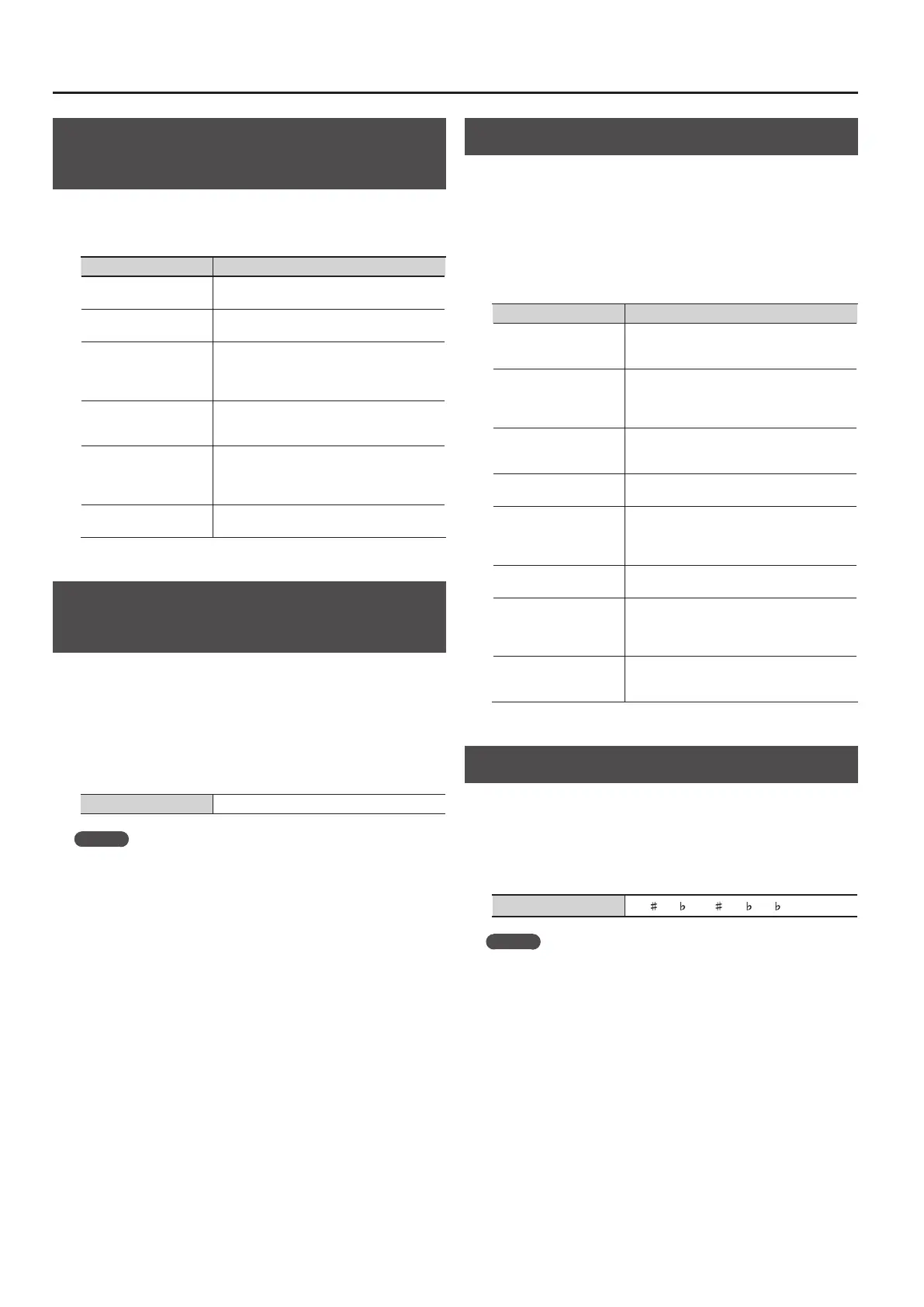50
Detailed Settings for Various Functions
Adjusting the Keyboard Sensitivity
(KEYTOUCH)
You can change the touch sensitivity, or response of the keys.
You can adjust the keyboard touch as appropriate for the playing
strength of the person who is performing.
Setting Explanation
FIX (Fixed)
The sound plays at one set volume, regardless of
the force used to play the keys.
L+ (Super Light)
This setting produces the lightest keyboard
touch.
L (Light)
You can achieve fortissimo () play with a less
forceful touch than usual, so the keyboard feels
lighter. This setting makes it easy to play, even
for children.
M (Medium)
This sets the standard keyboard touch. You can
play with the most natural touch. This is the
closest to the touch of an acoustic piano.
H (Heavy)
You have to nger the keyboard more forcefully
than usual in order to play fortissimo ( ), so the
keyboard touch feels heavier. Dynamic ngering
adds even more feeling to what you play.
H+ (Super Heavy)
This setting produces the heaviest keyboard
touch.
Matching the Pitch with Other
Instruments (TUNING)
When playing ensemble with other instruments and in other such
instances, you can match the standard pitch to another instrument.
The standard pitch generally refers to the pitch of the note that’s
played when you nger the middle A key. For a cleaner ensemble
sound while performing with one or more other instruments, ensure
that each instrument’s standard pitch is in tune with that of the other
instruments. This tuning of all the instruments to a standard pitch is
called “master tuning.”
Setting 415.3 Hz–466.2 Hz
MEMO
When the instrument is shipped from the factory, this is set to
“440.0 Hz.”
Adjusting the Tuning (TEMPRMNT)
You can play classical music such as baroque pieces using their original
tuning.
Most modern songs are composed and played with the assumption
that equal temperament (the most common tuning in use today) will
be used, but when classical music was composed, there were a wide
variety of other tuning systems in existence.
Playing a composition with its original tuning lets you enjoy the
sonorities of the chords that the composer originally intended.
Setting Explanation
EQU
(Equal)
In this tuning, each octave is divided into twelve
equal steps. Every interval produces about the
same amount of slight dissonance.
MAJ
(Just(Major))
This tuning eliminates ambiguities in the fths
and thirds. It is unsuited to playing melodies
and cannot be transposed, but is capable of
beautiful sonorities.
MIN
(Just(Minor))
The Just tunings dier from major and minor
keys. You can get the same eect with the minor
scale as with the major scale.
ARB
(Arabic)
This tuning is suitable for the music of Arabia.
KIRN
(Kirnberger)
This is an improvement of the Meantone and
Just tunings that provides a high degree of
freedom of modulation. Performances are
possible in all keys (III).
MEAN
(Meantone)
This scale makes some compromises in just
intonation, enabling transposition to other keys.
PYTH
(Pythagorean)
This tuning, devised by the philosopher Py-
thagoras, eliminates dissonance in fourths and
fths. Dissonance is produced by third-interval
chords, but melodies are euphonious.
WERC
(Werckmeister)
This temperament combines the Meantone and
Pythagorean tunings. Performances are possible
in all keys (rst technique, III).
Specifying the Keynote (TMPR KEY)
When playing with tuning other than equal temperament, you need
to specify the temperament key for tuning the song to be performed
(that is, the note that corresponds to C for a major key or to A for a
minor key).
If you choose an equal temperament, there’s no need to select a
temperament key.
Setting
C, C
, D, E , E, F, F , G, A , A, B , B
MEMO
Instead of the sharp (#) symbol, a quotation mark will be shown in
the display.

